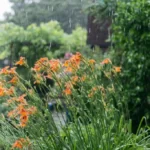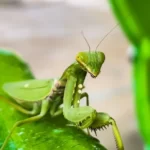Spider plants, with their graceful arching leaves and air-purifying qualities, are beloved additions to many homes. However, one common concern that spider plant owners encounter is the sight of their once-vibrant foliage drooping. This unexpected change in the plant’s appearance can raise questions and a sense of worry. In this article, we will unravel the mysteries behind drooping spider plants. We’ll explore the various factors that can lead to this issue and provide solutions to help your spider plant regain its vitality, adding charm to your indoor space once again.
- 🕷️ SPIDER PLANT NOURISHMENT: Our 3-1-2 Liquid Fertilizer Mist is expertly formulated to cater to the unique needs of spider plants, promoting lush green foliage, strong roots, and vibrant spiderettes.
- 🌿 ORGANIC INTEGRITY: Prioritizing organic purity, we provide your spider plants with gentle, chemical-free nourishment, enhancing their well-being and vitality.
- 🕷️ LUSH FOLIAGE: Watch your spider plants thrive as our mist delivers essential nutrients that encourage healthy leaf growth and an abundance of graceful arching leaves.
- 💪 ENHANCED RESILIENCE: Beyond aesthetics, our mist strengthens spider plants, making them more resistant to pests, diseases, and environmental stressors.
- 💧 EFFORTLESS APPLICATION: Designed for simplicity, our ready-to-use mist offers convenient nourishment for your spider plants, suitable for gardeners of all levels.
Overwatering and Underwatering
Two of the most common culprits behind a drooping spider plant are overwatering and underwatering. Both issues can have detrimental effects on the health of your plant:
- Overwatering: Spider plants, like many houseplants, are susceptible to the adverse effects of overwatering. When you water your spider plant excessively, the roots may become waterlogged, leading to root rot. This condition can hinder the plant’s ability to absorb nutrients and moisture, resulting in drooping leaves. Over time, the roots may even turn brown or black, indicating severe damage.
- Underwatering: On the flip side, underwatering can be equally damaging. When a spider plant is deprived of adequate moisture, its leaves can lose turgor pressure and become limp. The plant might show signs of stress by drooping its leaves as a survival mechanism to conserve water. In severe cases, the tips of the leaves may turn brown and crispy.
Maintaining a balance in your watering routine is crucial. Spider plants prefer to dry out slightly between waterings but don’t thrive in consistently dry or waterlogged conditions. To prevent both overwatering and underwatering, it’s essential to monitor the moisture levels in the soil and adjust your watering schedule accordingly.
Light and Temperature Stress
Another significant factor that can lead to drooping spider plants is light and temperature stress. Spider plants thrive in bright, indirect light. When they receive too little or too much light, they can display signs of stress:
- Inadequate Light: Insufficient light can cause a spider plant to become weak and floppy. The plant may stretch towards the nearest light source, resulting in elongated and drooping leaves. Inadequate light can also lead to reduced photosynthesis, affecting the plant’s overall health.
- Excessive Light and Temperature: Conversely, exposure to excessive direct sunlight or high temperatures can stress your spider plant. The intense sun can scorch the leaves, causing them to droop and turn yellow or brown. High temperatures can accelerate transpiration, leading to moisture loss and wilting.
To maintain a healthy spider plant, find the right balance in terms of lighting conditions. Place your spider plant in an area with bright, indirect light, and ensure that it is not exposed to harsh, direct sunlight or extreme temperature fluctuations. Monitoring the plant’s environment is key to preventing light and temperature stress.
Pot Size and Root Bound Plants
The size of the pot and the condition of the plant’s roots can significantly influence the health and appearance of a spider plant. Spider plants, like many houseplants, prefer to have sufficient room for root growth. When the pot becomes too small, the plant can become root-bound, which leads to drooping and other issues.
- Root-Bound Plants: When a spider plant outgrows its pot and becomes root-bound, it can exhibit signs of stress, including drooping leaves. In a root-bound condition, the roots become densely packed and entangled, restricting their ability to absorb nutrients and water effectively. The result is an unhealthy, wilted appearance.
To address this issue, consider repotting your spider plant into a slightly larger container, allowing the roots room to grow. This can rejuvenate the plant and encourage healthier, upright growth. Make sure the new pot has drainage holes to prevent overwatering.
Nutrient Deficiencies
Nutrient deficiencies can also lead to drooping spider plants. These deficiencies can affect the overall health of the plant and manifest in various ways:
- Nitrogen Deficiency: Nitrogen is essential for healthy leaf growth and overall plant development. A lack of nitrogen can result in stunted growth, yellowing of leaves, and drooping foliage. Providing a balanced, nitrogen-rich fertilizer can help correct this deficiency.
- Magnesium Deficiency: Magnesium is another crucial nutrient for spider plants. When they lack magnesium, their leaves may exhibit interveinal chlorosis, where the tissue between the veins turns yellow, while the veins remain green. This can cause the plant to look weak and droopy.
To address nutrient deficiencies, consider using a balanced, water-soluble fertilizer formulated for houseplants. Follow the recommended application rates on the product label and ensure that your spider plant is receiving the necessary nutrients for robust growth. Correcting nutrient imbalances can help restore the plant’s vigor and reduce drooping.
Understanding the role of pot size and the importance of providing adequate nutrients is vital in promoting a healthy and vibrant spider plant. By addressing these factors, you can help your spider plant regain its strength and regain its characteristic upright, graceful appearance.
- Indoor plant food specifically formulated for indoor potted plants. High concentrate plant fertilizer only take 1/2 teaspoon while watering your houseplants.
- Indoor plants especially house plants deserve plant food fertilizer that delivers nutrients that matter to the health of your plants. Our high concentrate 4-3-4 lasts much longer than other product
- We use the highest quality ingredients to produce this liquid fertilizer for indoor plants. This house plant fertilizer contains a balanced 4-3-4 nutrient blend.
- Easy to use 1 teaspoon of Easy Peasy Indoor Plant Food with a minimum of 2 cups of water will provide enough house plant fertilizer for many live houseplants
- REDUCE WASTE: Easy Peasy Plants Indoor Plant Food high concentrate indoor plant food provides indoor plant fertilizer for more houseplants than any other competitor
Pests and Diseases
Pests and diseases are potential adversaries that can lead to drooping spider plants. These issues can have a detrimental impact on the overall health and appearance of your beloved houseplant:
- Pests: Spider mites, mealybugs, and aphids are common pests that can infest spider plants. These tiny invaders can weaken the plant by feeding on its sap and causing stress. When spider plants are under attack, they may exhibit signs of distress, including drooping leaves and discoloration.
- Diseases: Fungal diseases, including root rot and leaf spot, can infect spider plants. Root rot, caused by overly damp soil and poor drainage, can lead to root damage and subsequently, drooping leaves. Leaf spot diseases can cause lesions on the foliage, further contributing to a weakened appearance.
Addressing pests and diseases promptly is crucial. Regular inspection and treatment with appropriate organic or chemical remedies can help your spider plant recover. Isolating infected plants and providing good air circulation can also aid in prevention.
Pruning and Maintenance
Regular pruning and maintenance play a crucial role in keeping your spider plant in optimal condition. Pruning helps remove dead or damaged leaves, encouraging new growth and maintaining an attractive appearance. Over time, as older leaves naturally deteriorate, removing them can improve the overall vitality of the plant. Pruning can also enhance the air circulation around the plant, reducing the risk of pests and diseases.
Maintenance tasks like cleaning the leaves to remove dust, and periodically inspecting for pests or signs of disease, are integral to ensuring the health of your spider plant.
Conclusion
In conclusion, if you find your spider plant drooping, it’s essential to investigate the potential causes and apply the appropriate remedies. From watering habits to light conditions, pot size, and nutrient management, understanding the needs of your spider plant is key to maintaining its vibrant and healthy appearance. Regular maintenance, vigilant pest and disease control, and thoughtful pruning can contribute to the resilience and beauty of your spider plant.
Remember that the well-being of your spider plant is in your hands, and by addressing the factors that lead to drooping, you can help it thrive once again, gracing your indoor space with its iconic arching leaves and air-purifying qualities. With a little care and attention, your spider plant will regain its grace and vitality, enhancing the ambiance of your home.






